Soluções abertas e fechadas em impressão 3D
Três tipos de soluções podem ser encontradas no mercado de sistemas de impressão 3D profissionais:
- Soluções integradas ou fechadas, que são aqueles em que o fabricante fornece equipamentos, materiais e softwares destinados a trabalhar em conjunto. Ao adquirir uma solução integrada, não é possível utilizar software ou materiais de outros fabricantes.
- Soluções abertas, onde o fabricante fornece equipamentos compatíveis com materiais e software de outros fabricantes.
- Soluções integradas com possibilidade de utilização de materiais externos. Esta é uma solução intermediária, geralmente com certas limitações quando se trata do uso de outros materiais ou softwares.
SOLUÇÕES INTEGRADAS OU FECHADAS
Um dos exemplos mais representativos dessas soluções é o Formlabs. O fabricante de soluções integradas normalmente oferece produtos que abrangem sistemas de impressão 3D, bem como equipamentos, software e materiais de pós-processamento.
A principal vantagem deste tipo de sistema é que todos os produtos foram desenvolvidos para trabalhar em conjunto, o que significa que não há necessidade de ajustar e otimizar os parâmetros de impressão. Também garante que todos os materiais disponíveis sejam compatíveis.
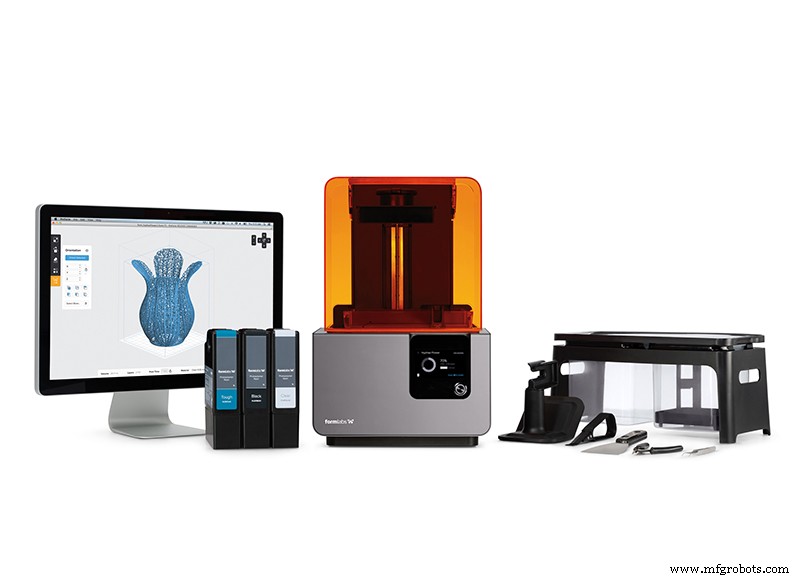
Imagem 1:Formulário 2 e acessórios. Fonte:Formlabs
Como resultado, esses sistemas são altamente confiáveis e reprodutíveis, o que resulta em um aumento significativo no desempenho. Outra característica importante é que os muitos parâmetros de configuração e valores modificáveis são geralmente reduzidos ao mínimo, exigindo apenas a seleção do tipo de material do fabricante e alguns parâmetros básicos. Isso o torna muito mais simples de usar e não exige muito conhecimento técnico dos usuários.
No entanto, nem tudo são vantagens. Este tipo de sistema tem duas limitações a considerar. Por um lado, o custo de materiais e consumíveis costuma ser consideravelmente mais alto. Por outro lado, o usuário está limitado a usar apenas os produtos do fabricante.
SOLUÇÕES ABERTAS
As soluções abertas não implicam em hardware ou software de código aberto. Refere-se aos fabricantes que fornecem equipamentos que suportam formatos de mídia padronizados e arquivos de impressão universais. Esta categoria inclui todas as impressoras que suportam linguagens de programação CNC universais, como .gcode e materiais de qualquer fabricante, independentemente de o equipamento ser de código aberto ou proprietário.
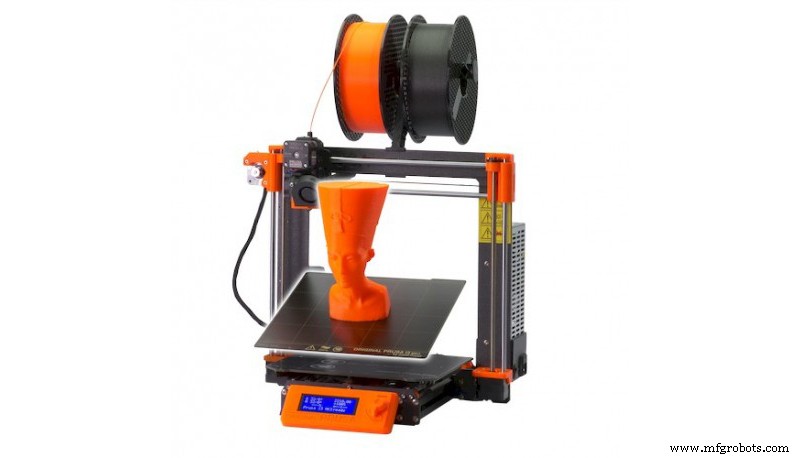
Imagem 2:Impressora 3D Prusa MK3S. Fonte:Prusa
This does not imply that the manufacturers themselves cannot also offer materials and software, which they usually do, but they do not restrict the use of their equipment to these.
The main advantage of this type of solutions is their high compatibility and the fact that they have the widest range of materials, limited only by the technical characteristics of the equipment itself. Moreover, in the case of using equipment from different manufacturers, it is possible to centralise everything in the same software without the need to use a specific one for each piece of equipment.
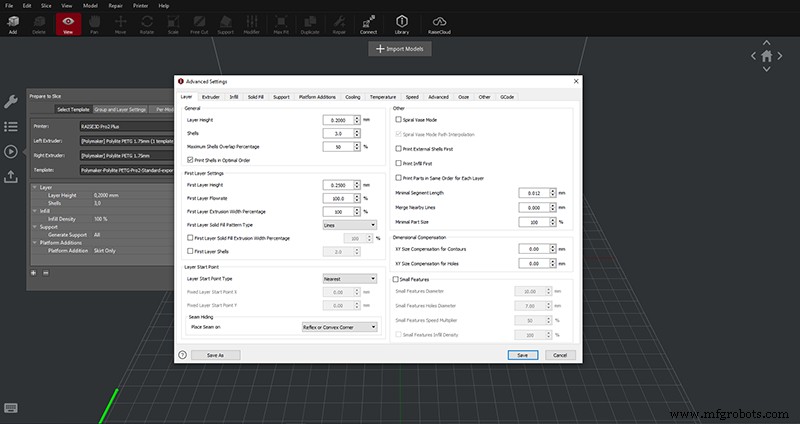
Image 3:Raise3D Ideamaker software configuration window. Source:Raise3D
The main disadvantage is that the printing profiles generally need to be fine-tuned and optimised for each material, which is time-consuming and expensive. In addition, a change of material supplier or even a reformulation of a material from the same supplier implies a new optimisation of profiles. This means that achieving the same reliability and reproducibility that integrated solutions provide requires continuous work and a thorough knowledge of materials and suppliers.
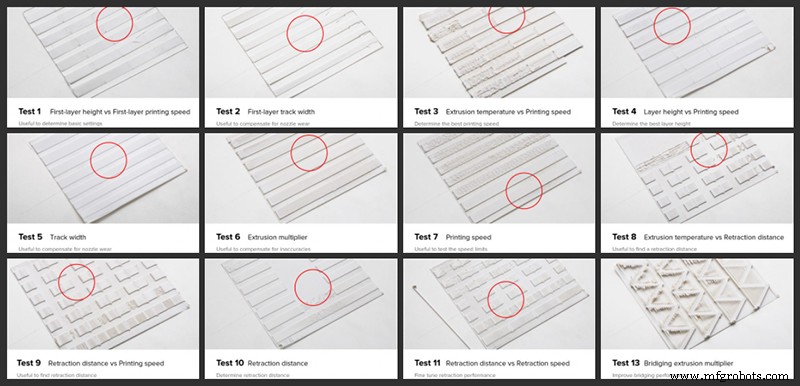
Image 4:Examples of optimisation. Source:3DOptimizer
Some companies offering such solutions are Prusa, Raise3D or UNIZ.
INTEGRATED SOLUTIONS WITH THE POSSIBILITY OF USING EXTERNAL MATERIALS
This is an intermediate option to the previous ones. They consist of integrated or closed solutions, with proprietary programming languages, but which also allow the use of third-party materials . Due to the use of proprietary languages it is necessary to stick to the software provided by the manufacturer.
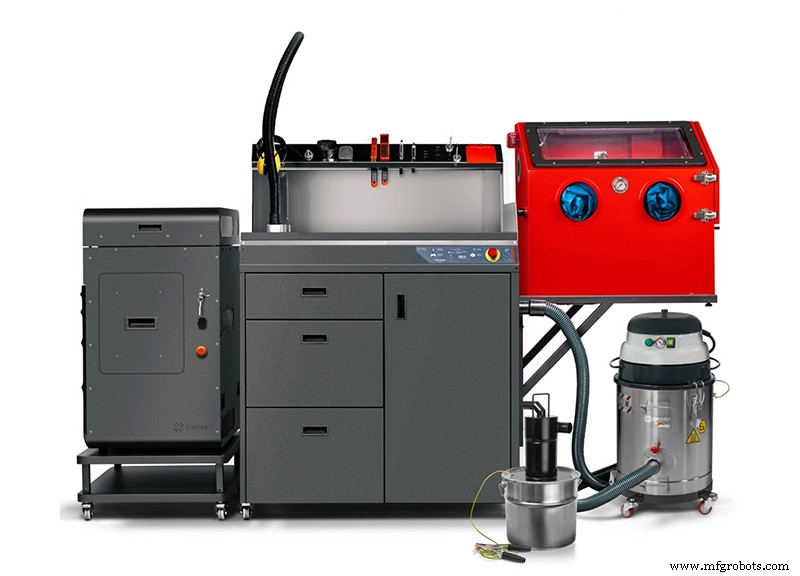
Image 5:SLS Lisa Pro 3D printer and accessories. Source:Sinterit
They have all the advantages of closed solutions but fewer drawbacks. Without having the wide compatibility of materials available in open solutions, they open up the possibility of using a wide range of materials from other manufacturers.
The trade-offs of this type of solution are minimal, with its main disadvantage being that the software generally has fewer configuration options, which can make it difficult to achieve good optimisation of other manufacturers' materials.
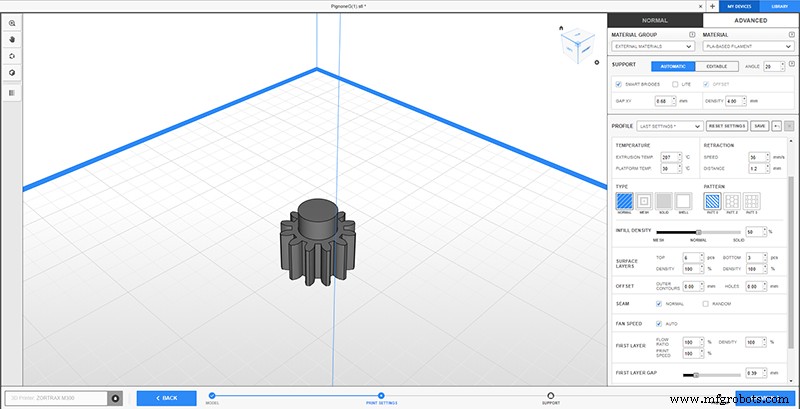
Image 6:Settings for external materials in the Zortrax Z-Suite software. Fonte:Zortrax
Representative examples of such solutions are Zortrax or Sinterit. Both offer a wide range of perfectly optimised materials, but also allow the use of materials from other manufacturers.
THE MOST APPROPRIATE SOLUTION
There are high quality solutions in all three groups and it would be wrong to consider one as better than the other. In order to select one or the other, the specific needs of each user must be analysed.
Users who are not specialised in additive manufacturing and are looking for a simple and efficient system will find integrated solutions and integrated solutions with a choice of external materials the best option. The implementation of this type of system is immediate and does not require in-depth technical knowledge . Although the costs of this type of solution may at first glance seem much higher than open solutions, in the long run the savings in optimisation time and material costs can compensate for this.
In the case of specialised users, with knowledge of additive manufacturing and materials, who require the use of very specific or experimental materials, they will find the above solutions to have significant limitations. This is why open solutions are a more versatile option despite the ongoing optimisation and fine-tuning tasks.
impressao 3D
- Materiais de impressão 3D para viagens espaciais?
- Impressão 3D e Fórmula Um:5 tendências nos esportes motorizados
- Hardware, Materiais e Software:Os 3 Pilares do Sucesso da Impressão 3D
- 8 Materiais inovadores para impressão 3D industrial [2018]
- Entrevista com especialista:Roboze CEO Alessio Lorusso sobre alta performance e impressão 3D composta
- Soluções de impressão 3D para empresas de petróleo e gás
- 10 materiais mais resistentes para impressão 3D
- Materiais de impressão 3D biodegradáveis
- Guia de seleção de materiais de impressão 3D
- Soluções de ferramentas e materiais para punções e matrizes



